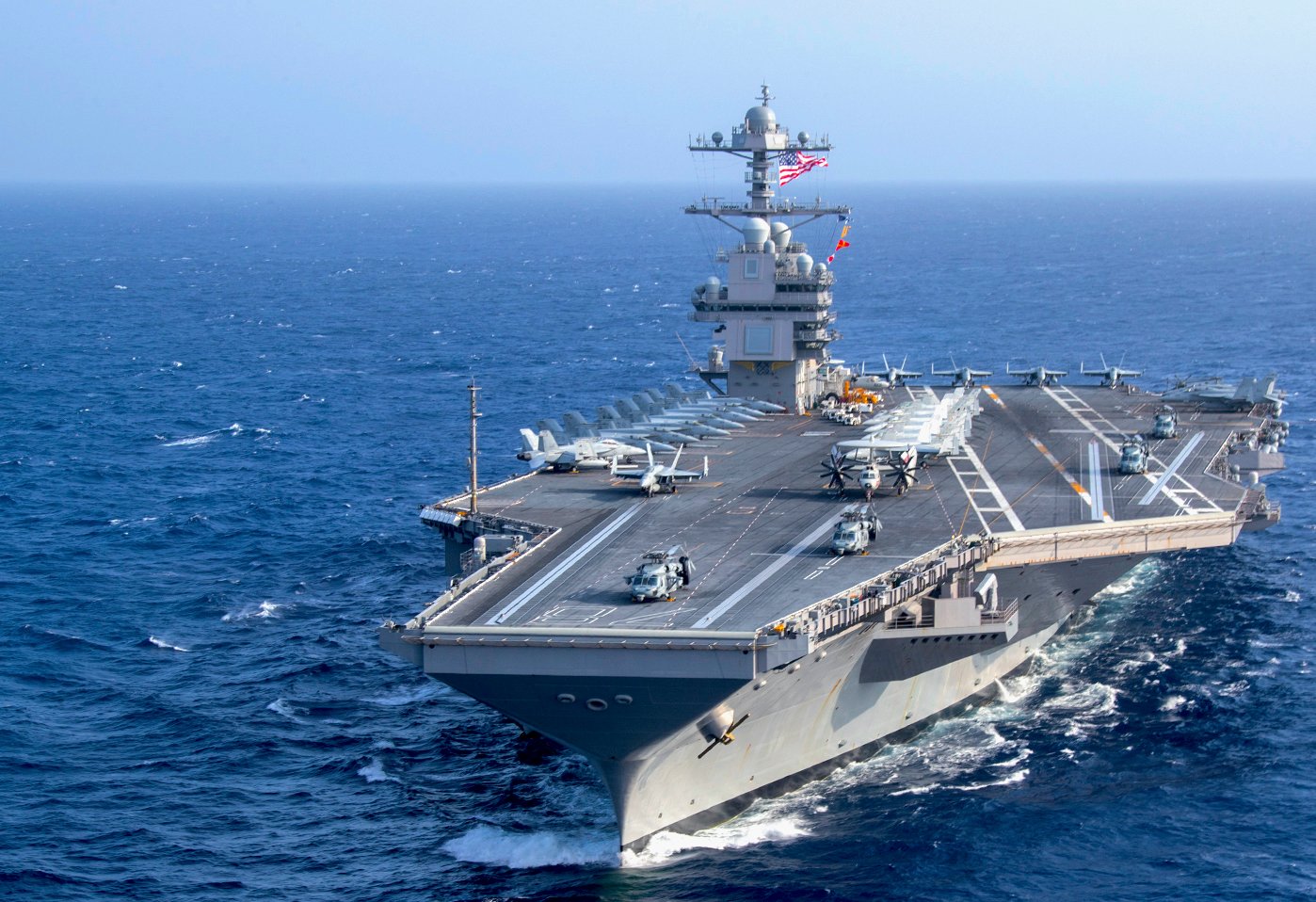
USS Gerald R. Ford (CVN-78) Transits the Atlantic Ocean on June 4, 2020. US Navy Photo
The Navy removed its program manager for the first-in-class USS Gerald R. Ford (CVN-78), as Navy acquisition chief James Geurts looks to boost performance in the new carrier program.
Capt. Ron Rutan has been moved from the program office to the Naval Sea Systems (NAVSEA) staff, and Capt. Brian Metcalf has taken over the program office. Metcalf previously served as the San Antonio-class amphibious transport dock (LPD-17) program manager and was working as the executive assistant to the commander of NAVSEA prior to his reassignment to the CVN-78 program office (PMS 378).
“Readiness of USS Gerald R. Ford (CVN-78) is the Navy’s top priority, and the progress the team made during the Post Shakedown Availability (PSA) met requirements while the subsequent eight months of CVN 78’s post-delivery test and trials (PDT&T) period has been impressively ahead of plan. Even in the face of a global pandemic, the team has kept a lightning pace, and we will continue to do so, for our Navy and our nation, until USS Gerald R. Ford completes her post-delivery obligations and is fully available and ready for tasking by the Fleet,” NAVSEA spokesman Rory O’Connor told USNI News.
Still, he said, “with 10 months left in PDT&T, followed by full-ship shock trials in [Fiscal Year 2021], we must ensure that the team takes the opportunity to recharge and allow for fresh eyes on upcoming challenges as required. While there is no perfect time for leadership transitions, it is prudent to bring in renewed energy now to lead the CVN 78 team through the challenges ahead. Capt. Metcalf’s proven program management acumen and extensive waterfront experience will be a tremendous asset to the CVN 78 team in the months ahead.”
Metcalf took command of the program office on July 1.
O’Connor reiterated that there was no specific incident or causal factor that led to Geurts’ decision to remove Rutan from the office and bring Metcalf in, but rather it was reflective of the program’s performance over time.
Though the carrier program has made good progress during the post-delivery test and trial period that started last fall, the program has also faced its share of difficulty. It caught the eye of lawmakers last year when, two years after commissioning as a warship, the carrier still didn’t have working weapons elevators and was facing ongoing challenges with the propulsion system.
In January, former Acting Navy Secretary Thomas Modly held a leadership summit as part of his “Make Ford Ready” initiative, bringing together Navy and industry leaders to discuss how to quick the ship’s transition from testing to fleet operations.
“While this is an ‘all hands on deck’ priority that can only be accomplished through the dedicated efforts of the Ford team, it will also require broad, department-wide encouragement, enthusiasm, and support for our shipmates and industry partners who will be heads down on the tasks at hand,” Modly said in a news release.
“We all have a stake in the success of this effort–for the future of our Navy, our national security, and security of the world.”
Chief of Naval Operations Adm. Mike Gilday said in the January news release that “I’m extremely bullish on Ford – and our Navy should be too. The Ford-class carrier is the future. It is a phenomenal ship designed to deliver increased capability for the carrier air wing of tomorrow. While good progress has been made over the past several months, together we must keep Ford headed in the right direction – and get her where she needs to be – operating forward at sea to reassure allies, deter adversaries, and protect our national interests around the world.”
Geurts has told reporters recently that the team from Newport News Shipbuilding and the Navy are working ahead of schedule, accomplishing maintenance activities now that had previously been scheduled to take place after PDT&T and the full-ship shock trials – meaning the maintenance period after shock trials would be shorter and the carrier could join the fleet faster.
Still, O’Connor said the change in leadership at the CVN-78 program office would provide “a fresh set of eyes and the energy and focus on the program to get it over the finish line, out of PSA, out of testing, out of shock trials and into the hands of warfighters, where it belongs.”
